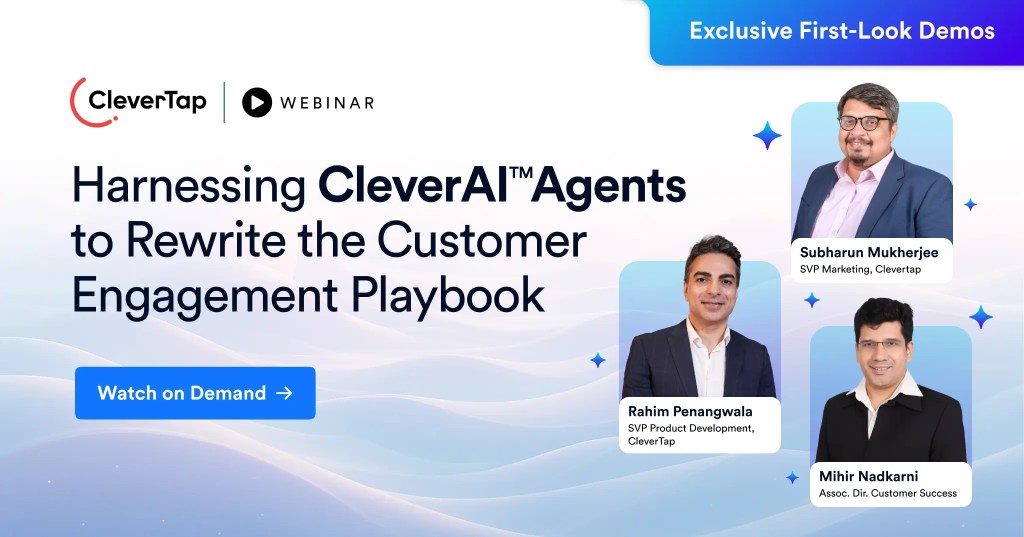The aftermath of COVID-19 has had a major impact on mobile businesses. Many industries are facing significant declines in user activity — with some seeing 80% fewer app launches. To keep their brands afloat, marketers are looking for new retention marketing methods to keep users engaged.
Customer retention has always been essential to a sustainable business. But in stressful times like these, brands must have effective retention marketing strategies to help them hold on to every customer they have.
In fact, brands that adopt a retention-first marketing strategy see an average 40% increase in lifetime value and a 20% increase in repeat purchases.*
We’ll break down this meaty topic into a plain-English primer on retention marketing, including a simple retention marketing definition, steps to build your customer retention plan, and retention marketing examples from some of today’s most-loved apps.
What Is Retention Marketing?
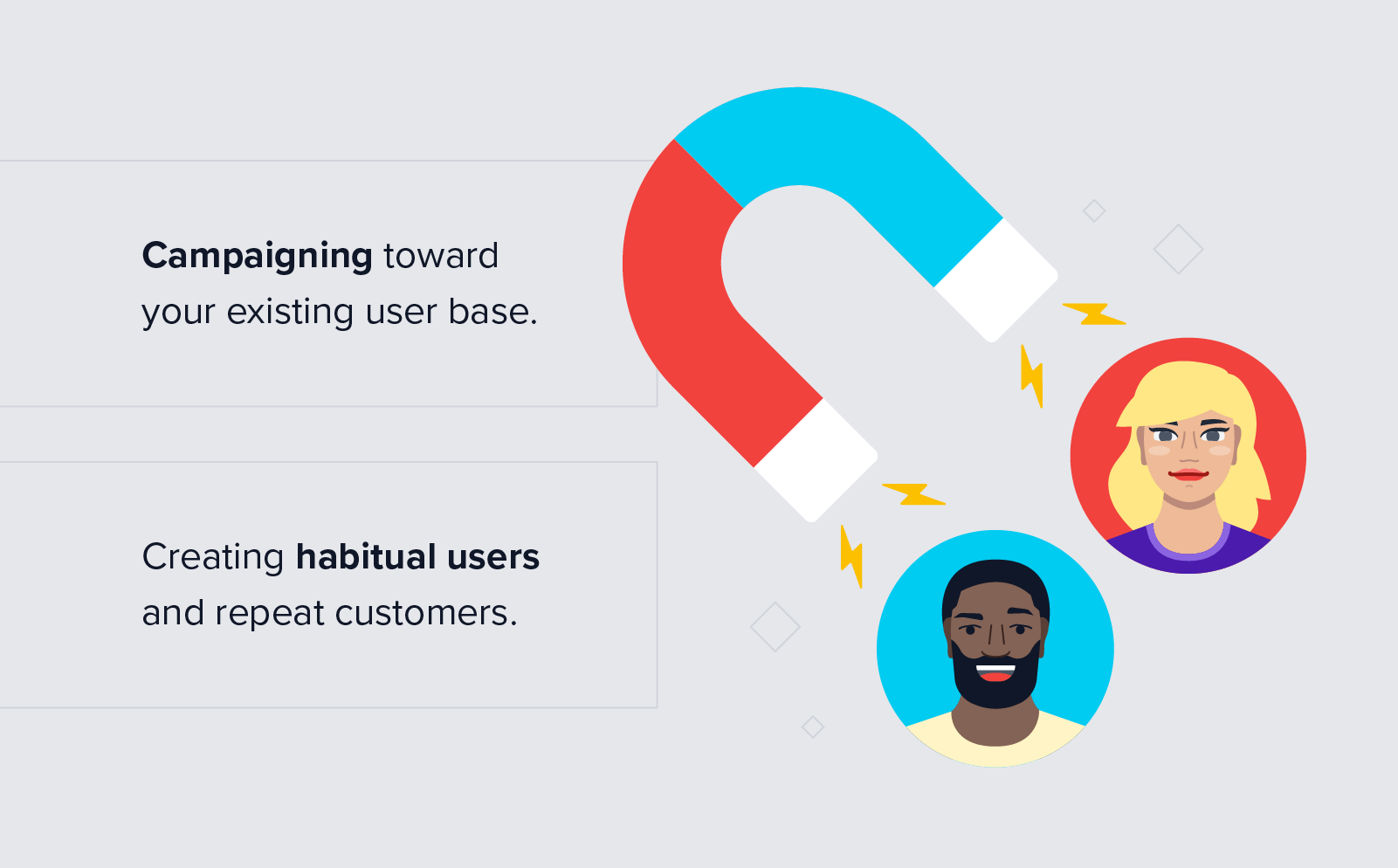
Retention marketing is about getting your customers to come back. Retention marketing focuses on bringing back your existing user base in order to create habitual users and repeat customers. The goal is to improve app engagement (session length and frequency) as well as business revenue (purchase frequency and average order value).
Retention marketing strategies are becoming increasingly prevalent in ecommerce — and it’s no surprise, seeing as it’s five to 25 times more expensive to acquire a new customer than it is to retain existing ones.*
Not only are repeat customers less costly to maintain, but they also have a higher average customer lifetime value (CLV) which is the amount a brand can expect to make from a customer throughout the duration of their relationship.
The most common way to measure retention marketing success is your app’s retention rate. We recommend tracking retention at three stages:
- Onboarding (days 0–2): If your first-time user experience helps new users experience your app’s value, you’ll see an above-average retention rate during this period.
- Building user habits (days 3–10): If your app is becoming a regular part of new users’ lives, you’ll see churn start to stabilize.
- Long-term retention (days 30, 60, 90): You want to see users sticking around week after week, month after month.
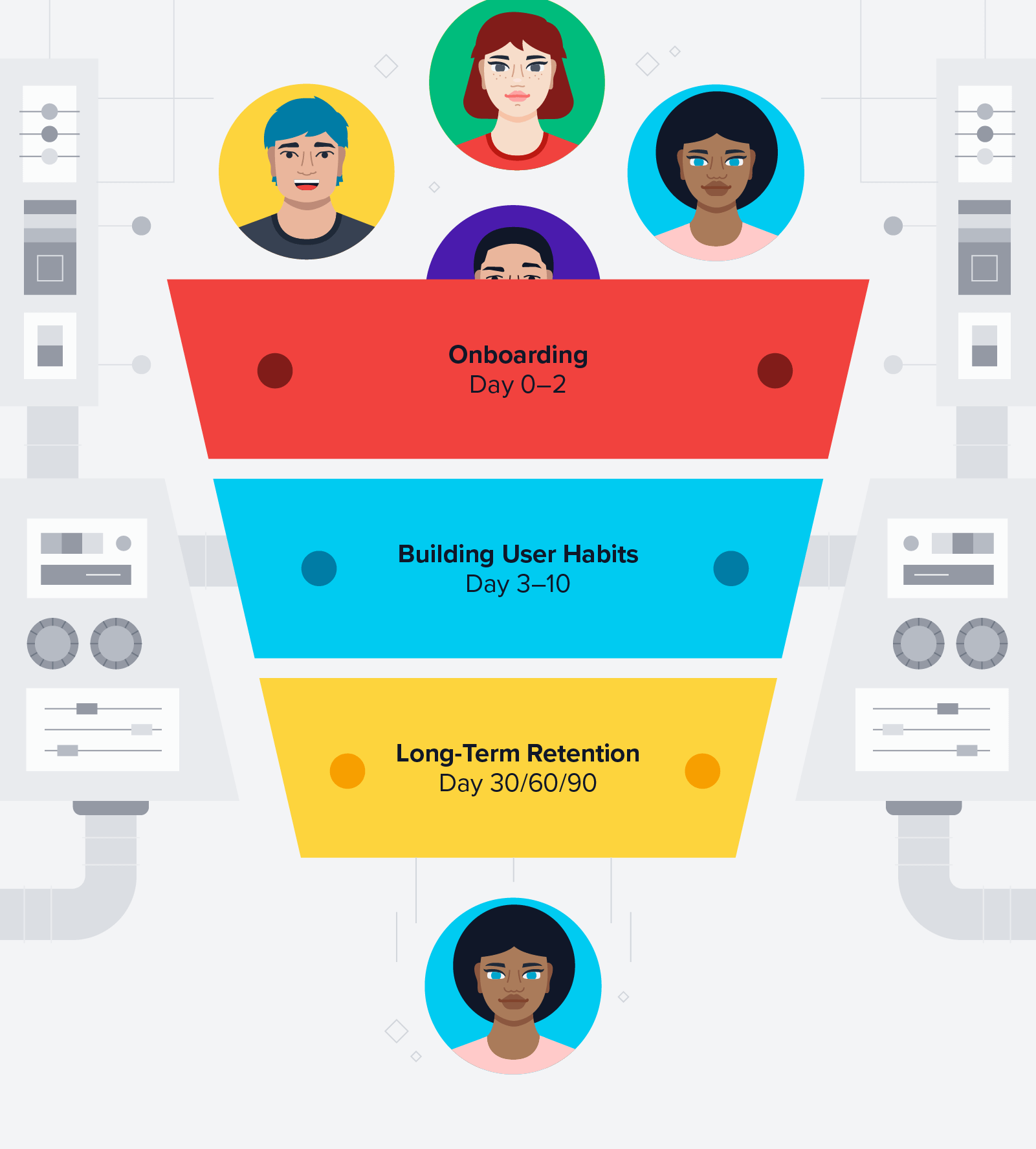
Use our retention rate calculator to quickly and accurately measure your customer churn.
Benefits of Retention Marketing
Retention marketing increases business profitability in four big ways:
- Higher Conversion Rate: Repeat customers are, unsurprisingly, 73.7% more likely to convert than first time-visitors.*
- Higher Average Order Value: While repeat purchases make up only 8% of customers, they contribute up to 40% of all sales.*
- Higher Customer Lifetime Value (CLV): By improving the frequency and amount that each user spends with your app, the profitability of each user goes up.
- New Acquisition Opportunities: With higher lifetime values per user, you can now afford to spend more on new customer acquisition channels and grow your app exponentially.
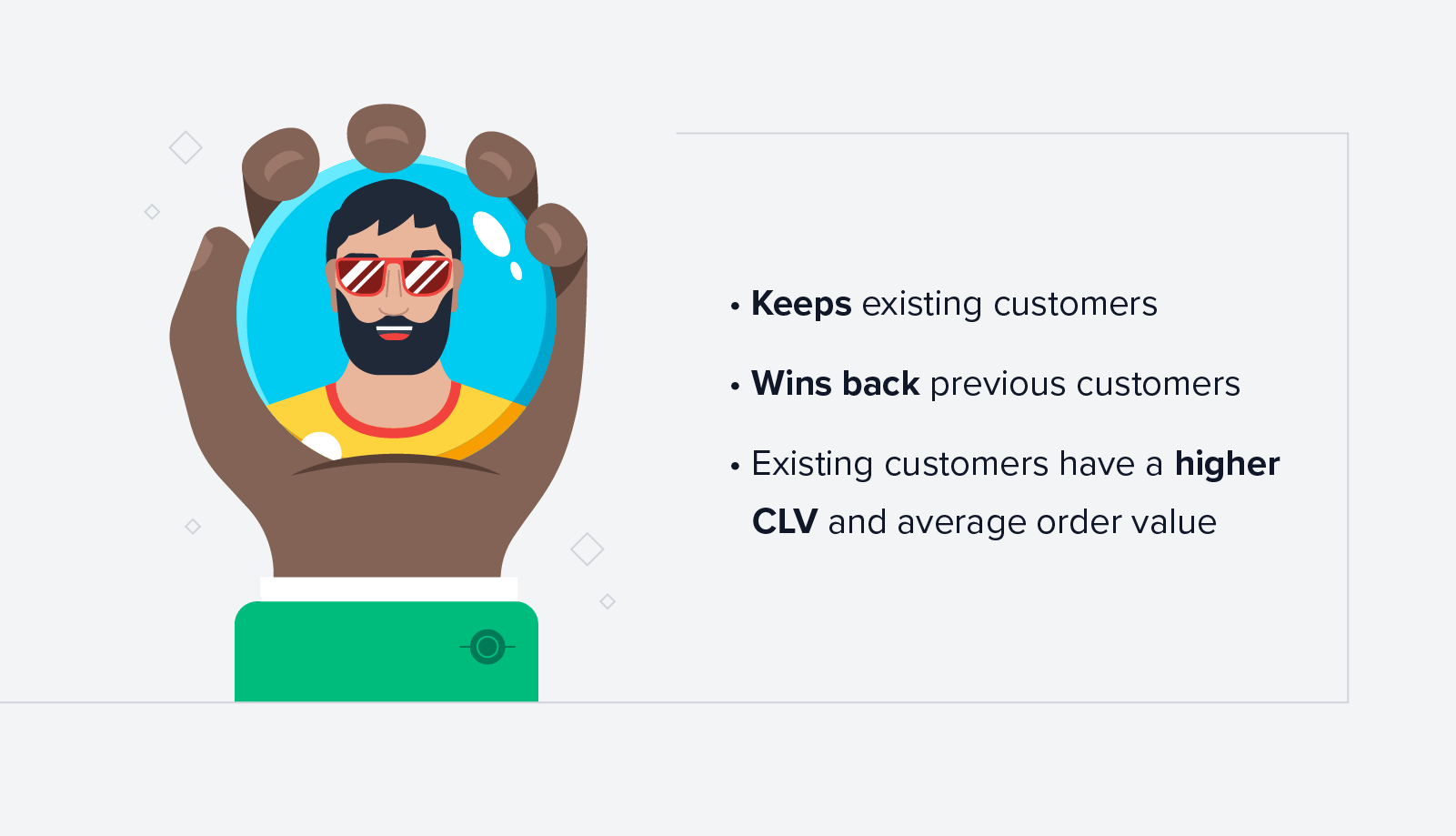
How to Build Your Retention Marketing Strategy
If you’ve built a business on the foundation of user acquisition, odds are you’re beginning to understand the importance of a retention-first growth strategy. Without solving the customer retention problem, businesses get stuck in an endless cycle of costly acquisition campaigns — all in an attempt to replace the customers they’re losing in a matter of days. And the only thing it leads to is faltering ROI and businesses that are vulnerable to uncertainty.
But by shifting your focus from acquisition to retention, you’ll see just how much of an impact retention marketing strategies can make on your business’ bottom line.
Even small improvements can have significant effects: a 5% increase in retention correlates with at least a 25% increase in profit,* and a 7% jump can boost CLV by as much as 85%.*
Moreover, highly engaged customers buy 90% more often and spend 60% more per transaction.*
Bottom line: Retention is the foundation of a recession-proof business. Here’s how to build your retention marketing strategy from the ground up.
Step 1: Understand Your Users with a User Journey Map
You can’t retain your current customers if you don’t understand them. Gone are the days of sending mass email blasts and newsletters — 66% of customers expect companies to understand their unique needs and personalizations, but 66% also say that they’re treated like numbers.*
Understanding how, where, and when potential and current users interact with your brand is essential for optimizing your retention marketing strategy at every stage. A user journey map is an important reminder that different users discover your brand in different ways and may have different expectations for your app.
One of the best ways to do this is with audience analytics software, which can help answer questions like:
- Who are your users?
- What do users use your platform for?
- Where are your users?
- When do users stop using your platform?
- Why are users churning?
By understanding what those expectations are, you can better tailor your user experience to meet your users’ needs — and boost retention rates for every key user segment.
Step 2: Determine Current Retention and Churn
How many customers are leaving? When are they leaving? And, who are your most satisfied customers, and why are they so happy with your app?
Use cohort analysis as a retention marketing strategy to find out how many customers churn, when they churn, and what the contributing factors are.
Cohorts may sound complicated and data science-y, but they’re really not. A cohort is simply a group of users who share a common trait — it could be they all downloaded your app on the same day, or they all purchased a certain product, or they all use a key feature.
For example, you could create a cohort of users who joined your app on a particular day, and track them over the next seven days. Each day, you’ll gain insight into how many users came back, how often they came back, what friction points were most likely to cause churn, and more.
At the end of the period, you’ll get a snapshot of day-by-day data that helps point out places of friction.
By tracking cohorts over time, you can see how different factors impact retention. For example:
- Do users who joined via a certain acquisition source stay more active on your app?
- Do users who receive a particular messaging campaign convert more frequently or spend more?
By seeing what’s working (and what’s not), you can find out what your most valuable users are doing and what leads other users to uninstall your app. And you can test any new messaging you may be trying out to measure its impact on your conversion and retention rates.
Step 3: Focus on Onboarding and First Purchase
All retention marketing phases are important… but they’re not all equal.
At the end of the day, the initial retention phase is the most critical. For example, did you know that 77% of users stop using an app within 72 hours of downloading?*
If users don’t have a good first-time user experience, the chances of them coming back are slim. One in four mobile apps are abandoned after the first launch.*
The good news? Onboarding is often where you can be most effective in preventing churn. The goals of onboarding are threefold:
- Setting Up: Guide new users through the initial stages of registration and login.
- Educating: Show users how your product works, ways it benefits the user, and quick tips for getting the most out of your product.
- Collecting Data: Collect information about your user to start building their personal profile and personalizing their user experience.
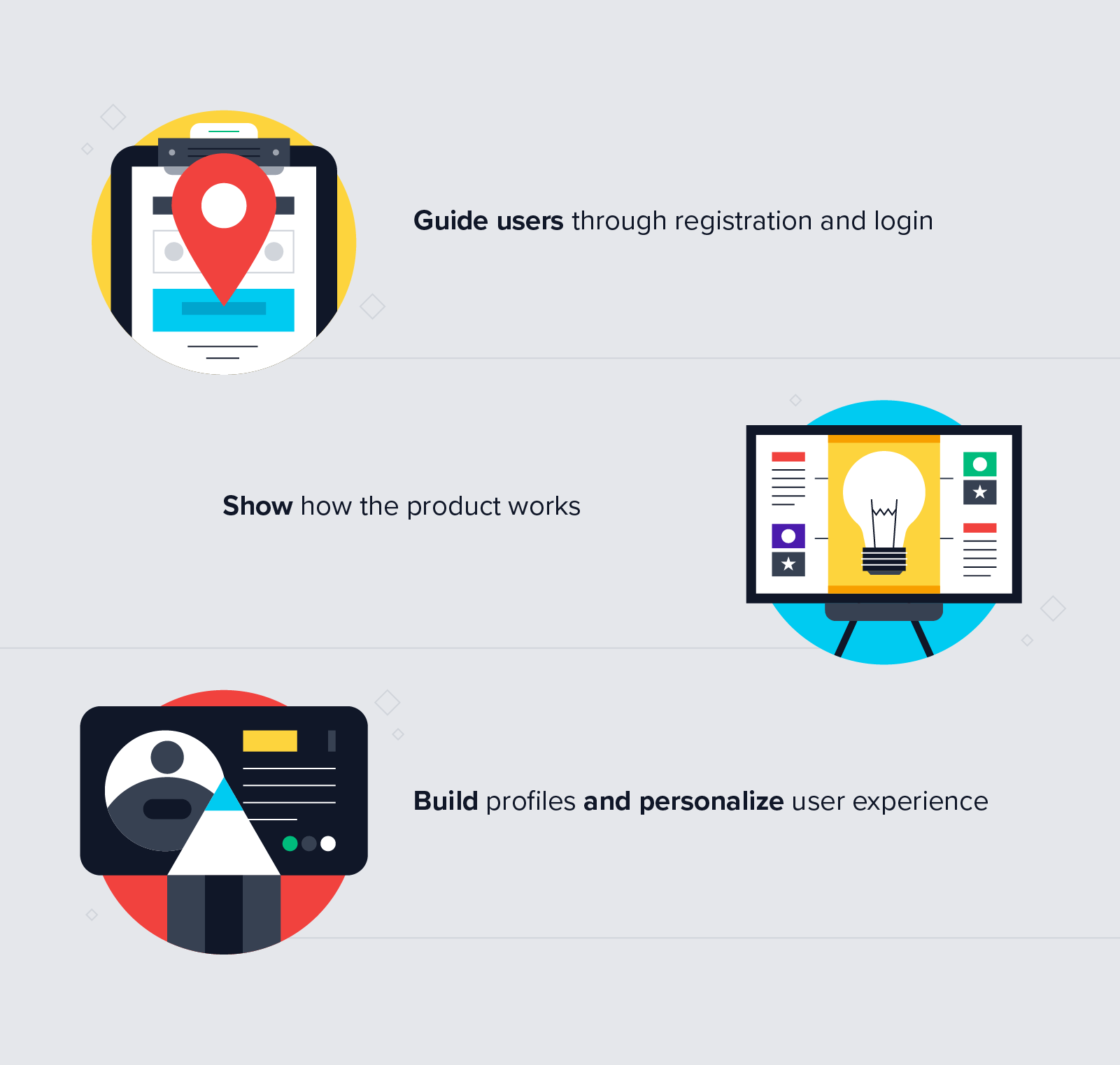
There are a few golden rules for effective onboarding:
- Keep it simple and give incentives to encourage an initial conversion
- Give users the option to skip through tutorials and other value-adds for a streamlined experience
- Use UI overlays, simple walkthroughs, and visual hints to help new users quickly experience the key benefit of the app
- Ask permission for things like data collection, push notifications, payment methods, and personal information
However you structure your onboarding process, make sure it’s effective in delivering value to new users early and often.
Step 4: Use Funnel Analysis to Solve Friction Points
A smooth user experience is essential to keep users coming back. But sometimes it’s difficult to know where your app’s sticking points are.
Funnel analysis will shine a spotlight on them. Funnels are a behavior analysis tool that’s used to identify how users are navigating your platform and at what points they drop off.
Conversion funnels help you focus on key aspects of your app: the registration or checkout process, for example, to show you how many users start the process vs. how many finish it and exactly where they drop off. You can zero in on trouble spots and get more users to complete the most important in-app actions.
Funnels can also be used to determine the most effective customer acquisition channels. From there, you can focus your customer retention marketing efforts on channels with the highest ROI.
By optimizing your funnels you can not only boost conversions but improve and simplify the user experience. Think Amazon’s one-click ordering. They’ve shaved the purchase process down to a single step, removing as many barriers as possible to make it quick and easy for customers to get what they want.
Step 5: Use Data to Create Personalized Customer Communications
Retention marketing is all about connecting with users on a personal level. It’s about improving the entire end-to-end user experience in a way that deepens their relationship with — and loyalty to — your brand.
Human-to-human connections are essential to connect with customers and keep their attention — now more than ever. But in order to create empathetic messaging and effective offers, you’ll need meaningful insights into who your users are and what they care about.
Why? Because you won’t be able to retain users unless you engage them the right way, at the right time, through customer segmentation.
Luckily, there are mobile marketing platforms that create detailed user profiles beyond surface-level analysis. These include:
- Demographics: Segmenting by explicit factors such as age, gender, occupation, and income
- Psychographics: Segmenting by implicit factors like attitude, values, personality, or interests
- Technographics: Segmenting by technology such as operating system, brand, browser, or software
- User intent: Segmenting by behaviors, habits, and preferences
Collecting and analyzing this user data helps you understand your customers based on a complete picture: from their age, gender, location, and interests to how they use your app.
All of these insights help you engage customers over the long term. And it’s a virtuous cycle: the longer you keep users, the more you get to know about them — and the better you can meet their needs.
Step 6: Make it Easy for Users to Share Feedback
Retention marketing is all about your relationship with your users. And everyone knows communication is the key to a healthy relationship.
Requesting user feedback is the best way to identify and fix friction points before users ditch your app — or take to App Store reviews to air their grievances. Users want to know that you’re listening to their comments, suggestions, requests, and complaints and doing something about them.
Ask for feedback (and include contact information) in your release notes, emails, and blog posts, and feature an in-app survey or feedback button in your app.
7 Types of Retention Marketing Strategies + Examples from Real-Life Brands
How have today’s top apps used retention marketing tactics to retain users and outlast the competition? Here are a few of the very best customer retention program examples to inspire your own efforts.
1. Reactivation-Based Retention Marketing Campaigns
Repeat customers are, perhaps unsurprisingly, 73.7% more likely to convert than first time-visitors.* But when considering customers that are no longer engaging with your brand, you’ll want to focus on the “goldilocks” time frame — not overwhelming customers who are in the beginning stages of churn, but not reaching too far in the past.
Email marketing platform Return Path’s study found that sending reactivation emails to “long inactive” customers has only a 1.8% read rate.* This can be partially attributed to spam or promotional message filtering, which mailbox providers determine with a mix of factors such as recency, engagement rate, and delete/ignore rate.*
Brand Example: Instacart
Just because a user uninstalls your app doesn’t mean they’re gone forever. Don’t forget to create retention marketing campaigns targeting inactive or uninstalled users.
Take it from Instacart — they created an email campaign incentivizing inactive users to come back with free delivery and discounts, and added a sense of urgency with a time-sensitive deal.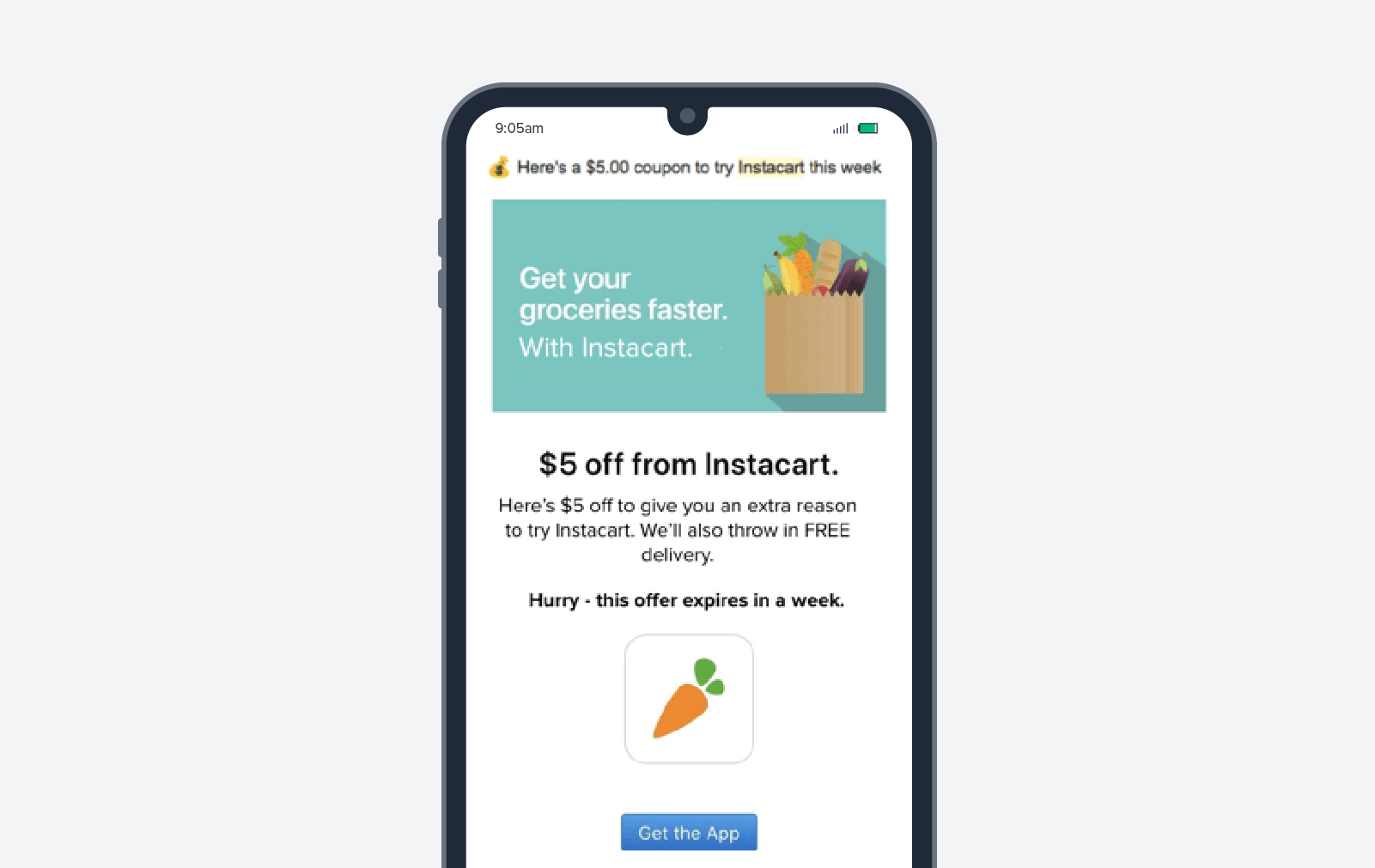
Use surveys and other forms of user feedback to understand why people uninstall your app, and then use that information to address the issue. Think of new feature announcements, discount codes, or personalized content/product recommendations.
Return Path studied reactivation campaigns and found two important best practices:
- Specify dollar amounts in the subject line. $ off offers are almost 2x more successful than % off discounts.
- Act fast. Only 1.8% of emails sent to long inactive users were read, compared to the 12% average.
2. Referral-Based Customer Retention Campaigns
Referral marketing is the practice of getting your customers to share your product with people, similar to word-of-mouth marketing. It’s also one of the most effective methods: 78% of B2B marketers say referral programs generate good or excellent SQLs.*
Brand Example: Airbnb
By incentivizing current users to recommend your app for a reward, you can both encourage them to keep using your platform and provide prospective users with powerful social proof to encourage new downloads.
And it works: 77% of mobile users say they downloaded an app because they heard about it through word of mouth.*
Dropbox, Airbnb, and Uber have famously used mutual incentives as viral loops to retain and reward current users and acquire new ones.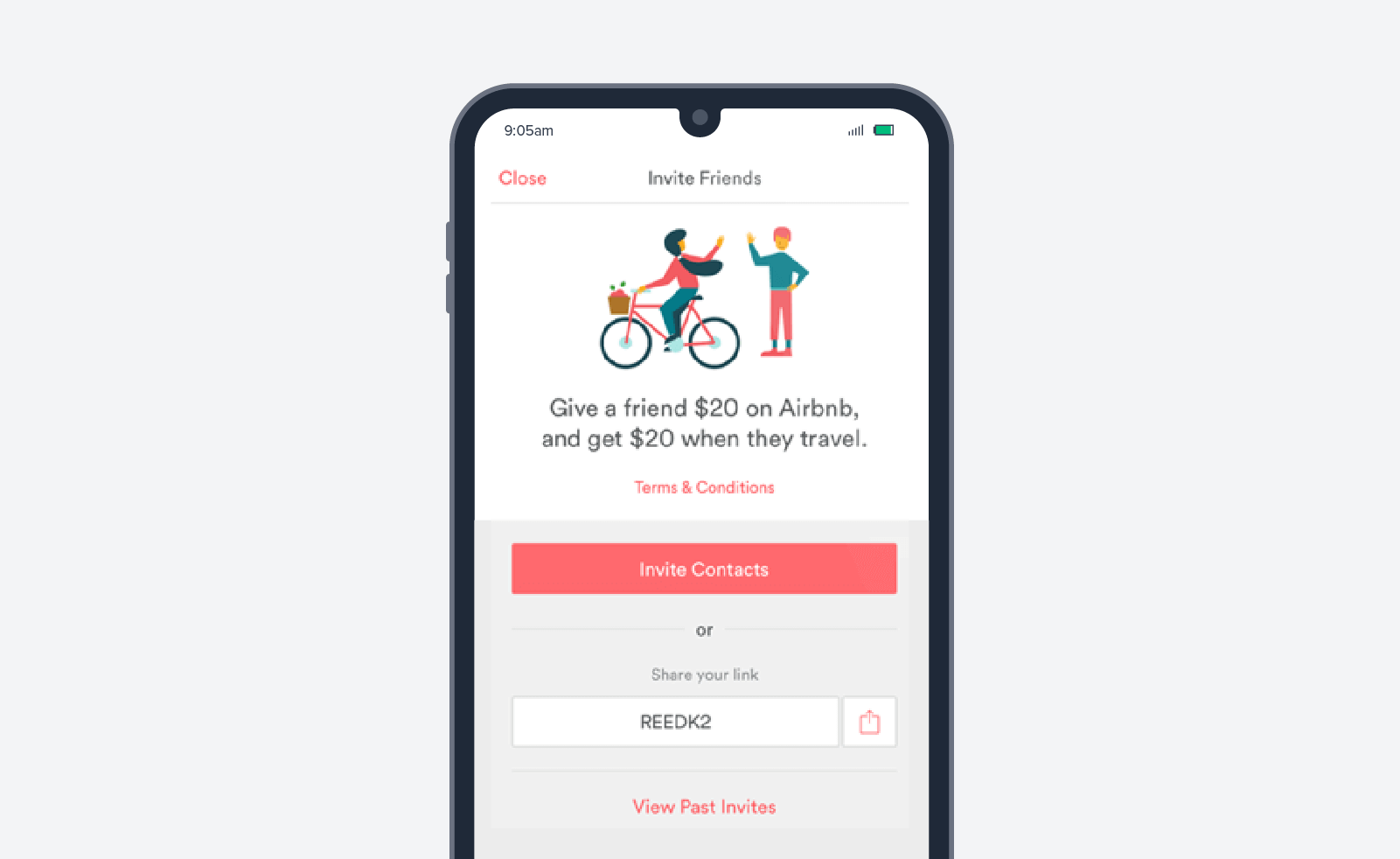
Use referral-based retention marketing campaigns to generate high-quality leads through methods such as two-sided referral programs, social endorsements, and user-generated content.
3. Onboarding Customer Retention Marketing Campaigns
Onboarding is the first step in a customer success program and can help alleviate points of friction or frustration if you invest the time into helping users understand your app and the benefits it provides.
With 55% of users saying they’ve returned a product because they don’t know how to use it,* it’s clear that companies need to invest in a good onboarding experience to retain their customer base.
Brand Example: MyFitnessPal
MyFitnessPal helps users track calories and log workouts via a simple user interface and comprehensive food database.
The app’s onboarding process is specifically designed to encourage new users to log something they’ve eaten. This allows them to immediately experience how easy it is to count calories with the app, with no guesswork or approximations.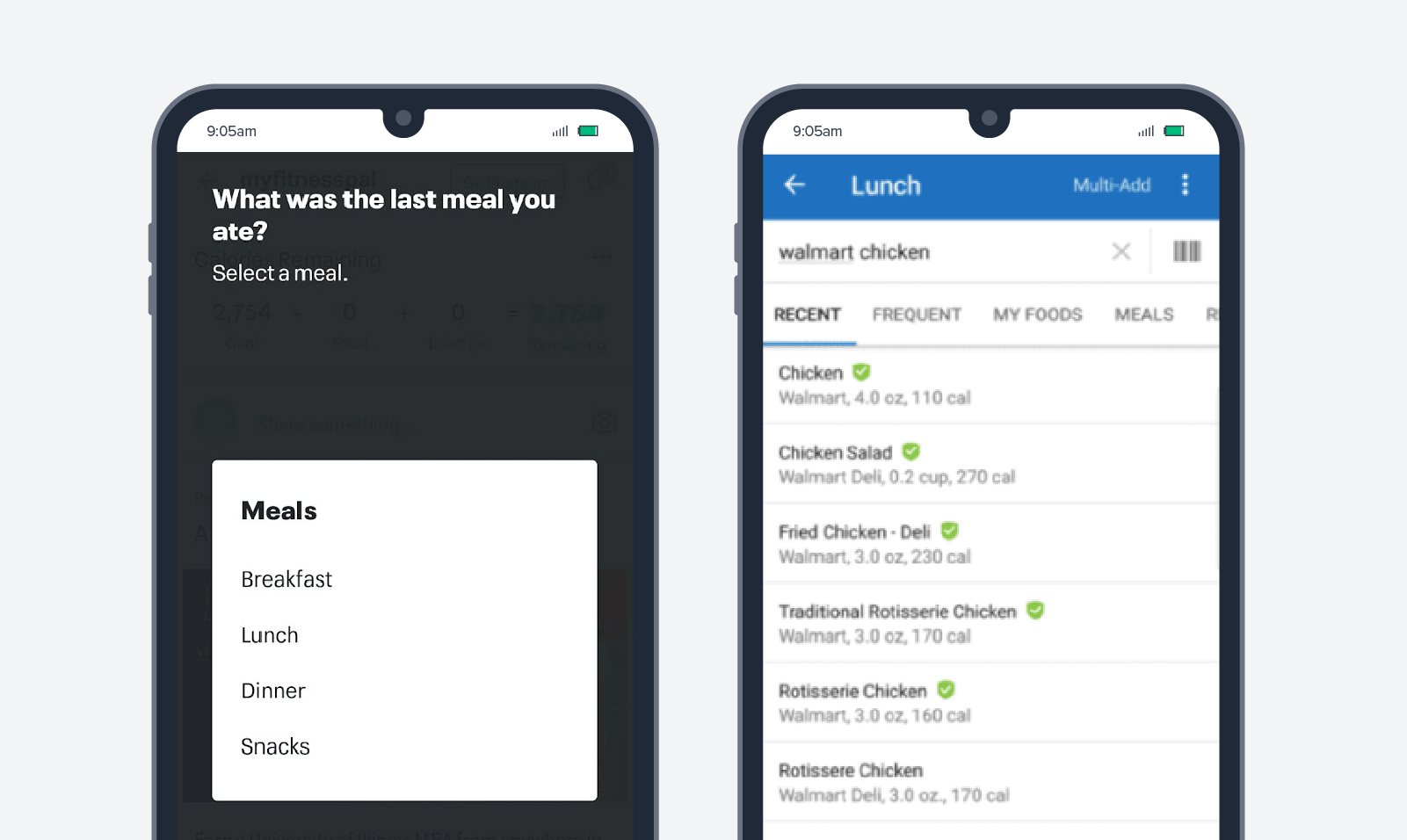
Nowadays, customers want a personalized onboarding experience — 59% actually say they prioritize personalization over the speed of onboarding.*
This is what MyFitnessPal gets right: rather than showing videos of how to use the platform, they guide users through the setup and have them enter in key information, like their weight and daily meals, to give them a starting point that they can easily reference for self-service information later on.
4. Subscription-Based Customer Retention Campaign
Monetizing your app is not a new retention marketing strategy. Of this, the subscription method is one of the most common, with 53% of software revenue generated via subscription by 2022.*
The subscription model is not only an effective way to generate revenue, but it can also improve retention. By providing incentives for users to purchase a monthly or even an annual subscription, you can build user habits and loyalty.
Brand Example: The New York Times
The New York Times app is a free download, and it’s currently offering a lot of free information on the COVID-19 pandemic to all readers without a subscription. But it also encourages free users to purchase a subscription in a variety of ways.
For one, the first thing a new user sees upon first launching the app is a full-screen message reinforcing the news outlet’s authority and prestige in journalism.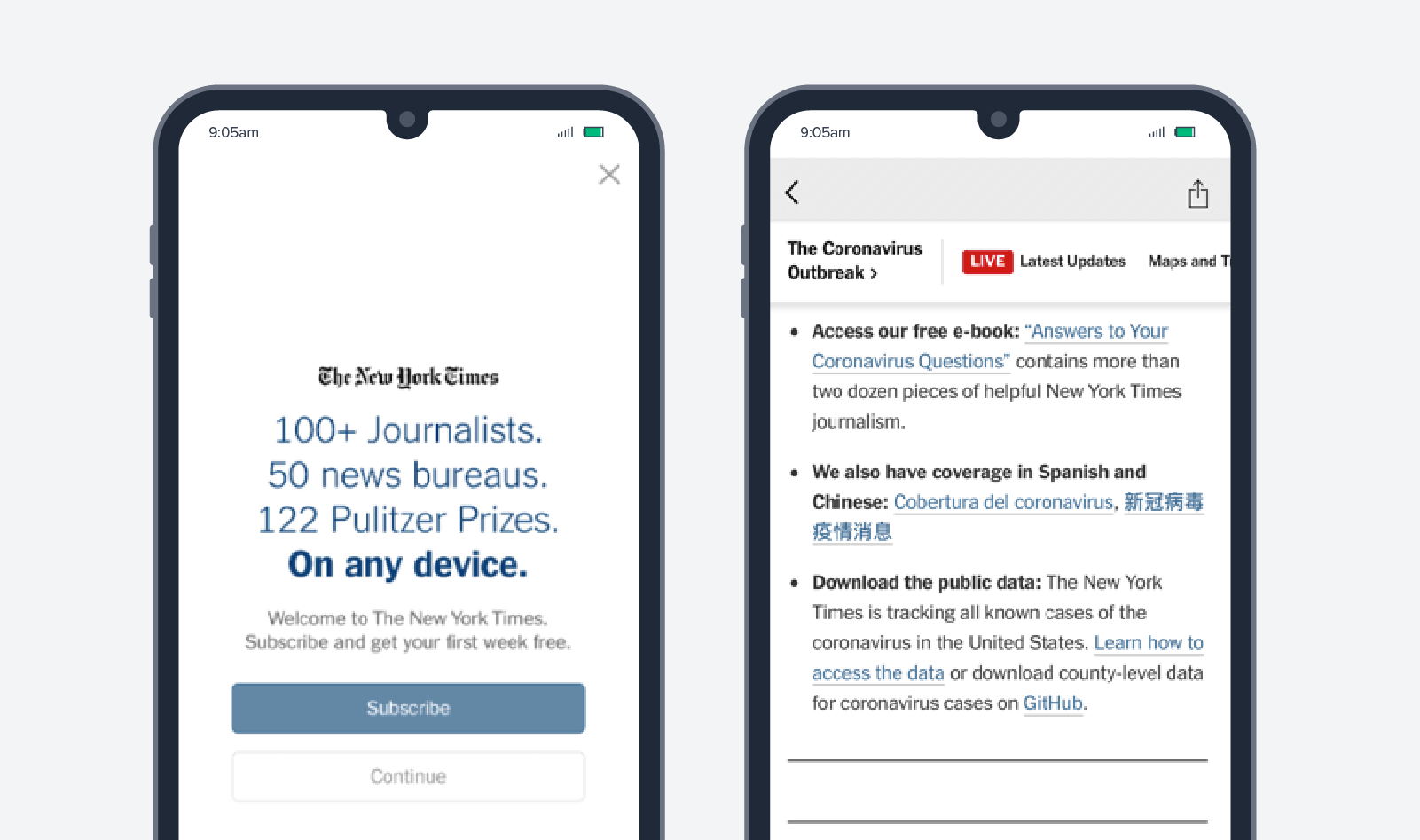
The New York Times also shows an in-app message to non-subscribers counting down the remaining free articles for that month. These marketing messages all entice free users to purchase a subscription and commit to the app as their trusted source for breaking news.
5. Content-Based Retention Marketing Campaign
Become your users’ go-to resource on anything and everything pertaining to your industry. By providing solutions to their problems, they’ll see your brand as the leader in your space and default to you for future purchases.
One of the best ways to do this is with a content-based retention marketing strategy. By providing exclusive benefits in the form of content, you can build customer loyalty with an inbound approach that doesn’t have additional cost on a per-person basis.
Brand Example: DoubleTree Hotels
DoubleTree Hotels, owned by Hilton, released a content campaign sharing the secret recipe for their famous chocolate chip cookies — a recipe bakers had been attempting to recreate for years.
DoubleTree’s recipe video has been viewed more than 800,000 times,* with fans posting their home-baked cookies to social media. This type of content helps DoubleTree maintain a strong connection with customers even when they’re not able to travel.
6. Loyalty and Rewards-Based Retention Campaign
At their core, customers want to feel valued, and they want to spend their money on brands that they enjoy. One of the best ways to hit both of these is with a loyalty program.
With 58% of loyalty program customers making a purchase at least once a month, it’s clear that loyalty programs work.*
Brand Example: Starbucks
Starbucks is a master at using the convenience of mobile to engage and retain customers. And even with the limitations of social distancing, they’re not sitting back and letting the coronavirus pandemic create a rift between them and their customers.
Their app has always featured a simple loyalty system that rewards users with stars for each order placed, which can then be redeemed for free food and drinks. Even now, with their app home screen entirely focused on COVID-19, they feature a helpful announcement letting users know that rewards points expiration dates have been extended.
It also notifies users that while in-store cafes are closed, drive-thrus and delivery still offer a safe and convenient way to get their favorite caffeine fix, shares how Starbucks is helping its employees stay healthy, and highlights current initiatives like their meal-matching donations to Feeding America. Plus, it offers an empathetic, human touch with spotlights on acts of kindness and a “Peace” playlist curated by baristas.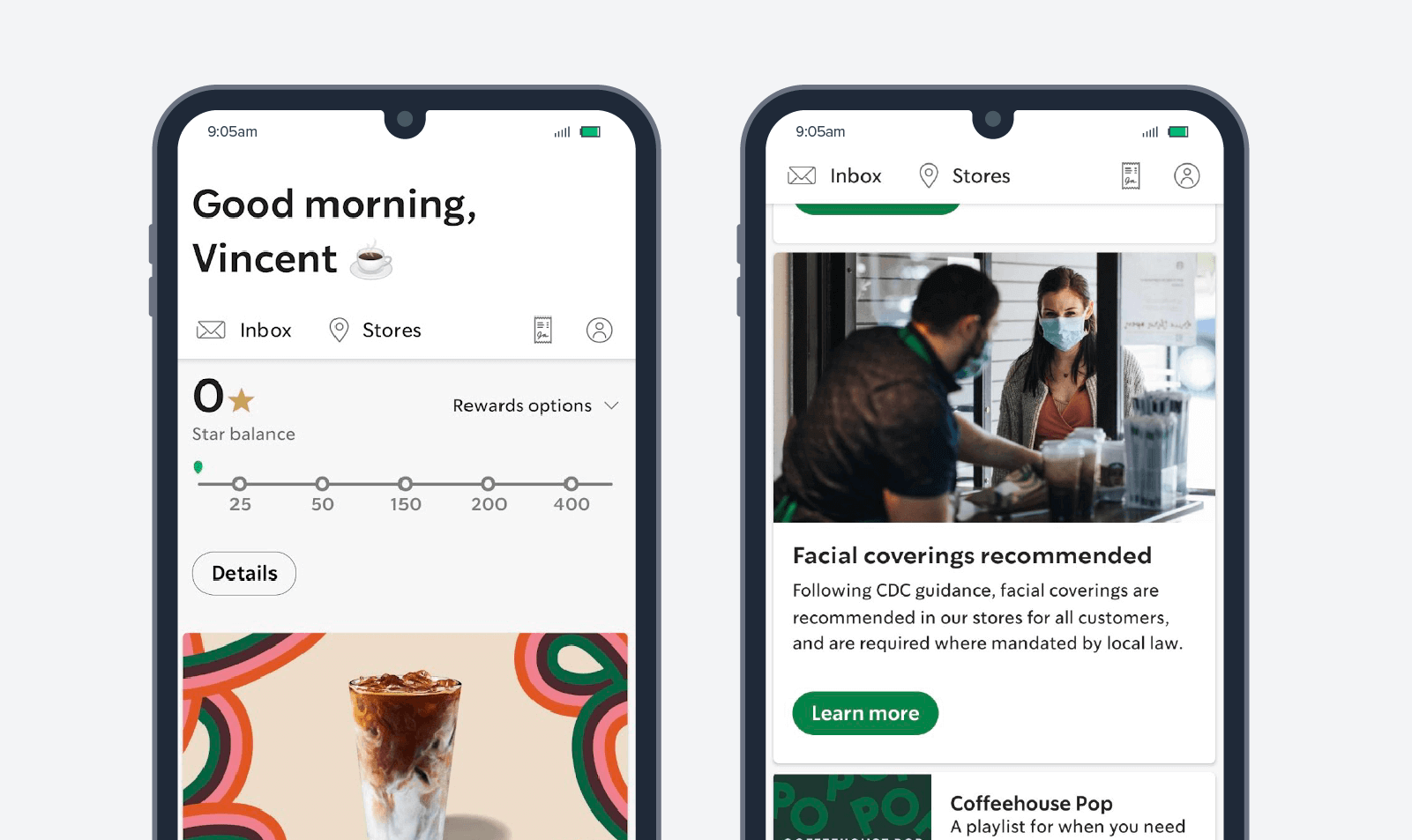
These updates all effectively reinforce their brand and help maintain their emotional connection with customers during this turbulent period.
7. Community-Based Customer Retention Campaign
Online communities are an extremely effective way for brands and consumers to engage with one another. By creating a group centered around a certain topic, you can bring together ideas to create buzz.
Just look at the popularity of Reddit, a community-based social networking platform that calls itself “the front page of the internet.” Redditors can find shared interests in areas ranging from Life Pro Tips to the Marvel Cinematic Universe — making communities a goldmine for user-generated content.
Creating an active, passionate community of users who share a common interest can be a powerful way to keep customers engaged with your app — especially in times of crisis when people lean on their communities for support and connection.
Brand Example: TripAdvisor
Take TripAdvisor: their vacation guide platform shows you customer reviews for things to do, places to stay, and where to eat, but it also provides an in-app discussion forum for TripAdvisor users to discuss anything and everything about the locations they’re visiting.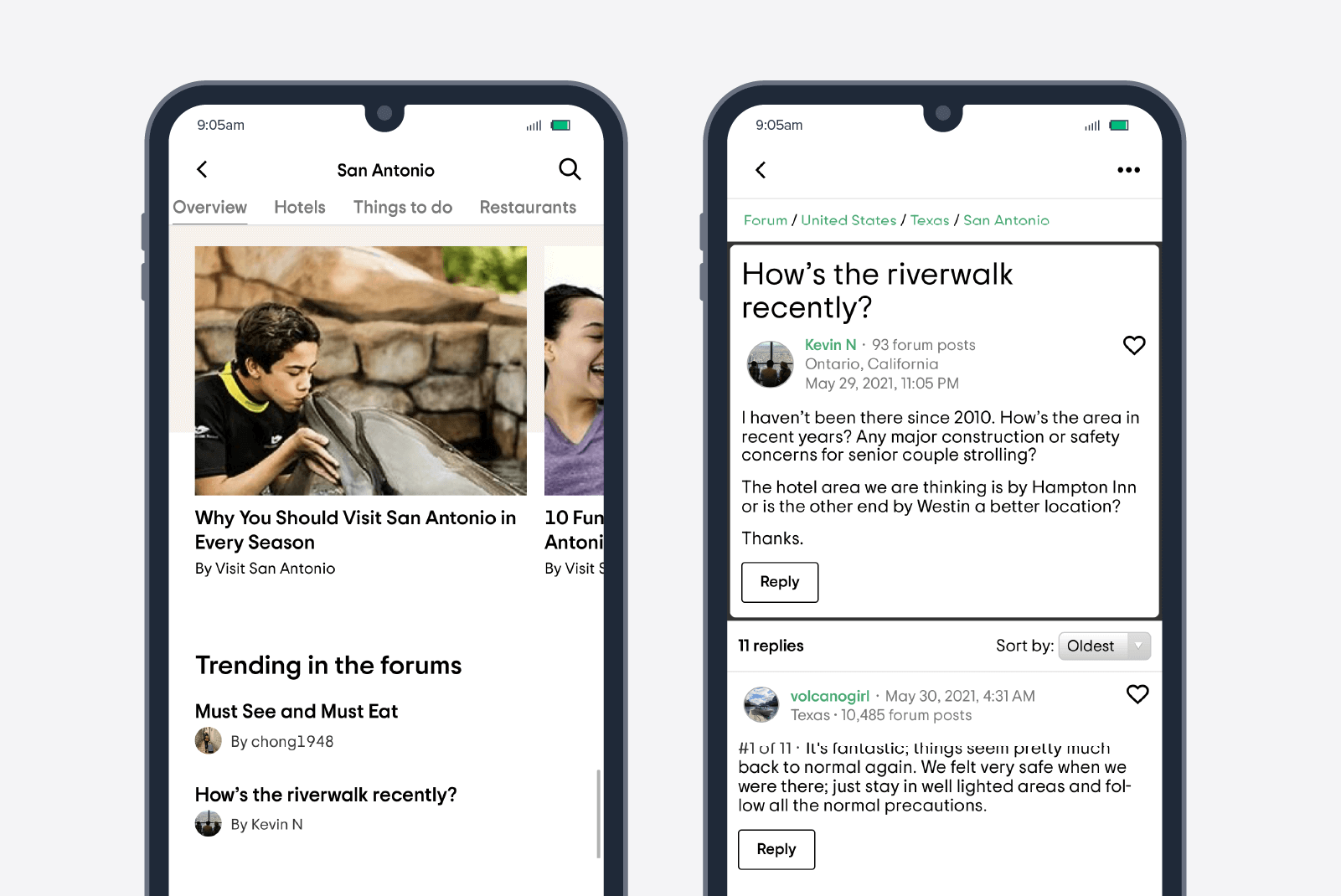
The TripAdvisor forum helps users get advice on things that can’t be fulfilled by a scoring system, like what to do if you only have 24, 48, or 72 hours or which area is best for party travelers. It also creates a community where users are incentivized to participate — and therefore further engage in the platform.
The Key to Successful Retention Marketing
Churn rate is like a fire alarm. It’s a warning sign that something’s very wrong, but it doesn’t help you put out the flames.
Successful retention marketing means going deeper than churn rates to understand who’s uninstalling your app, when, and why — so you can make informed decisions that will have a deeper impact on your app’s growth.
The first step is tracking retention rates, identifying key user segments, and building customer retention strategies.
See how CleverTap helps 10,000+ global brands build retention-first businesses that last. Get a personalized demo with one of our mobile marketing experts to learn how integrated analytics and engagement can fuel your growth and boost your retention marketing strategy.
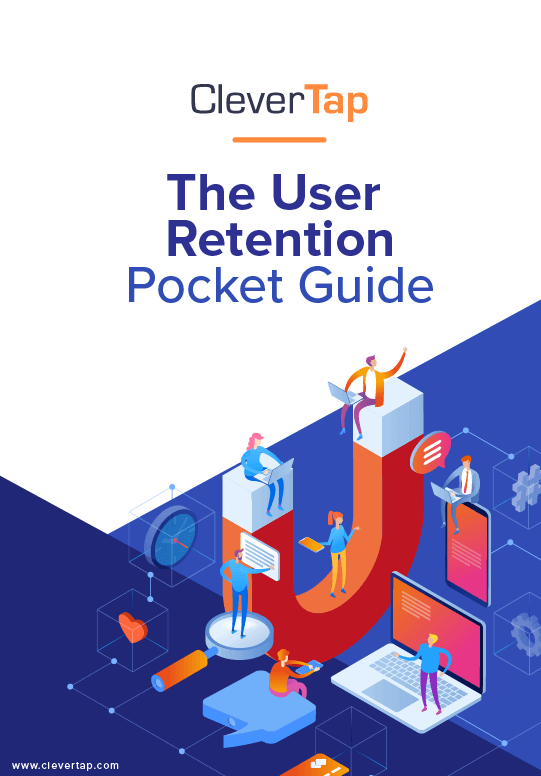
The User Retention Pocket Guide
Shivkumar M 
Head Product Launches, Adoption, & Evangelism.Expert in cross channel marketing strategies & platforms.
Free Customer Engagement Guides
Join our newsletter for actionable tips and proven strategies to grow your business and engage your customers.












































